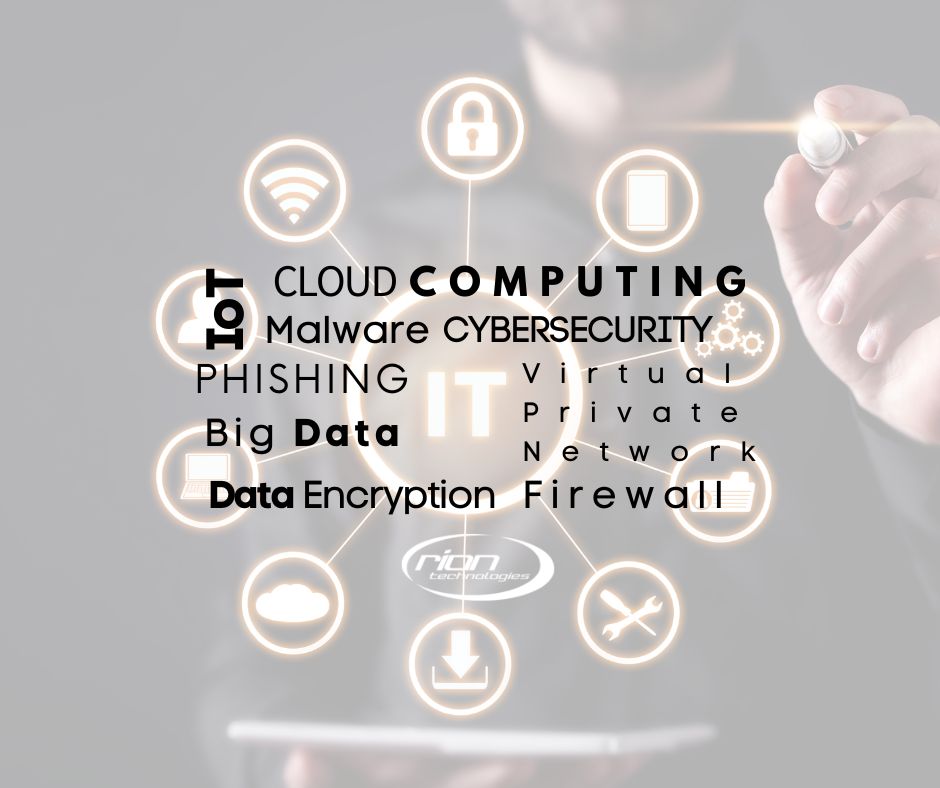
In today’s digital age, technology plays an integral role in both personal and professional lives. However, for those who aren’t tech-savvy, the world of IT can often seem overwhelming, filled with complex terminology and jargon. Understanding these terms is essential for effectively communicating and navigating the ever-evolving tech landscape. In this beginner’s guide, we’ll break down common IT jargon into simple explanations, providing clarity and guidance with insights from Rion Technologies, your trusted partner in the tech world.
IT stands for Information Technology, which encompasses the use of computers, software, networks, and other digital technologies to store, process, and transmit information. Essentially, IT is all about managing and leveraging information to support various business functions and personal activities.
Cloud computing refers to the delivery of computing services, including storage, processing power, and software, over the internet. Instead of relying on physical hardware and infrastructure, cloud computing allows users to access resources on-demand from anywhere with an internet connection. Think of it as renting storage space or computing power from a remote provider rather than hosting everything on your own premises.
Cybersecurity is the practice of protecting computer systems, networks, and data from unauthorized access, attacks, and damage. It involves implementing various measures, such as firewalls, encryption, and antivirus software, to safeguard digital assets and prevent cyber threats.
Data encryption is the process of converting plain text or data into a coded form to prevent unauthorized access. Encrypted data can only be decoded and read by individuals or systems with the appropriate decryption key. It’s like locking your data in a secure digital vault to keep it safe from prying eyes.
A VPN is a secure network connection that allows users to access the internet privately and securely. It encrypts data transmitted between the user’s device and the VPN server, protecting it from interception by hackers or other malicious actors. VPNs are commonly used for remote work, accessing geo-blocked content, and maintaining privacy while browsing online.
A firewall is a network security device that monitors and controls incoming and outgoing network traffic based on predetermined security rules. It acts as a barrier between a trusted internal network and untrusted external networks (such as the internet), blocking unauthorized access and potential threats from entering the system.
Malware is malicious software designed to disrupt, damage, or gain unauthorized access to computer systems and networks. Common types of malware include viruses, worms, Trojans, spyware, and ransomware. Malware can infect devices through email attachments, infected websites, or software downloads, compromising data security and system integrity.
Phishing is a cyber-attack technique used to trick individuals into divulging sensitive information, such as passwords, credit card numbers, or personal details. It typically involves sending fraudulent emails or messages that appear to be from reputable sources, prompting recipients to click on malicious links or provide confidential information unknowingly.
The Internet of Things refers to the network of interconnected devices and objects embedded with sensors, software, and connectivity capabilities to exchange data and interact with each other over the internet. Examples of IoT devices include smart home appliances, wearable fitness trackers, and industrial sensors. IoT technology enables automation, monitoring, and data analysis for various applications, from smart homes to smart cities.
Big data refers to large volumes of structured and unstructured data that cannot be processed or analyzed using traditional database management tools. Big data analytics involves extracting insights and value from these massive datasets using advanced data processing techniques, such as machine learning, data mining, and predictive analytics. Big data analytics enables businesses to uncover patterns, trends, and correlations that can inform decision-making and drive innovation.
Understanding IT jargon is the first step toward becoming more confident and informed in the digital realm. At Rion Technologies, we believe in demystifying technology and empowering our clients to make informed decisions about their IT needs. Whether you’re a beginner or an experienced professional, we’re here to provide clarity, guidance, and tailored solutions to help you navigate the ever-changing tech landscape with confidence. Contact us today to learn more about how we can support your journey in the tech world.